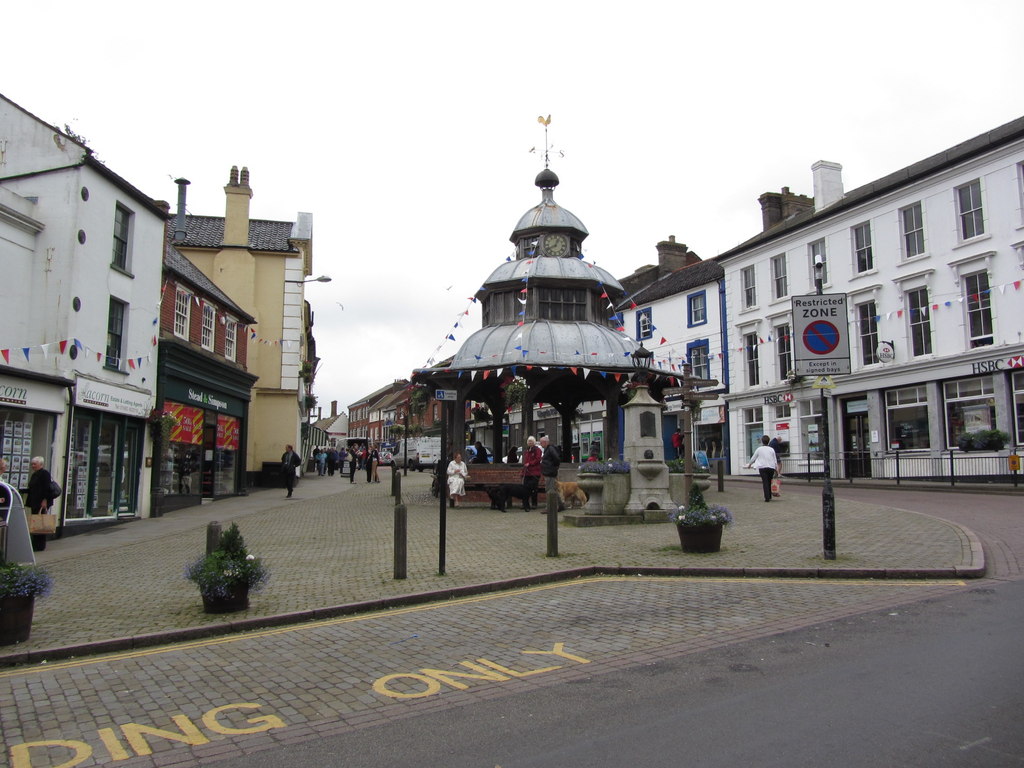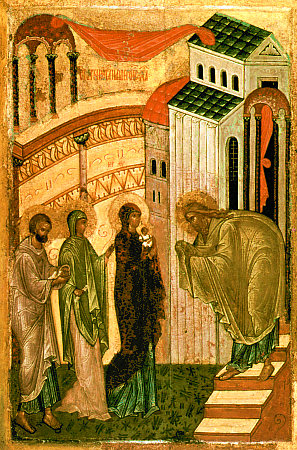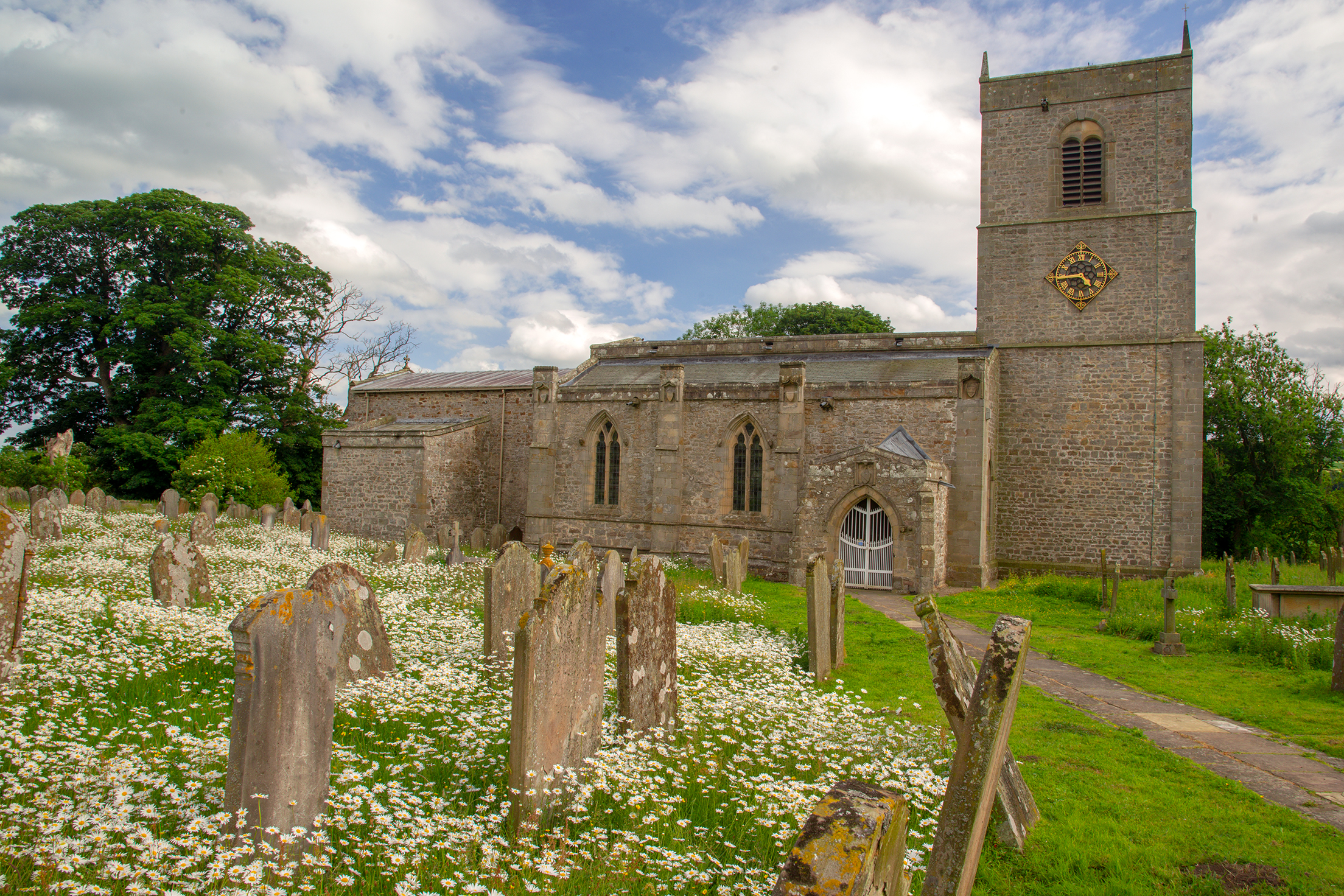|
East Ruston
East Ruston is a village and a Civil parishes in England, civil parish in the England, English county of Norfolk. The village is located south-east of North Walsham and north-east of Norwich. History East Ruston's name is of Anglo-Saxon origin and derives from the Old English for the eastern brushwood farm or settlement. In the Domesday Book, East Ruston is listed as a settlement of 87 households in the Hundred (county division), hundred of Happing. In 1086, the village formed part of the East Anglia, East Anglian estates of Ralph Baynard. In 1758, East Ruston post mill was built and remained in operation until it fell into dereliction after the Second World War. A further tower mill was built in 1868 and operated by Horace Turner. The machinery was removed from the mill in the 1960s with the building still standing. During the Second World War, East Ruston was the location of British Army roadblocks and a reserve training area in preparation for resistance of a Nazi Germa ... [...More Info...] [...Related Items...] OR: [Wikipedia] [Google] [Baidu] |
North Norfolk
North Norfolk is a Non-metropolitan district, local government district in Norfolk, England. Its council is based in Cromer, and the largest town is North Walsham. The district also includes the towns of Fakenham, Holt, Norfolk, Holt, Sheringham, Stalham and Wells-next-the-Sea, along with numerous villages and surrounding rural areas. The district lies on the north coast of Norfolk, facing the North Sea, with much of its coastline lying within the Norfolk Coast AONB, Norfolk Coast Area of Outstanding Natural Beauty. Some south-eastern parts of the district lie within The Broads. The neighbouring districts are Borough of Great Yarmouth, Great Yarmouth, Breckland District, Breckland, Broadland and King's Lynn and West Norfolk. History The district was created on 1 April 1974 under the Local Government Act 1972, covering seven former districts which were all abolished at the same time: *Cromer Urban district (England and Wales), Urban District *Erpingham Rural District *North Wa ... [...More Info...] [...Related Items...] OR: [Wikipedia] [Google] [Baidu] |
Nazi Germany
Nazi Germany, officially known as the German Reich and later the Greater German Reich, was the German Reich, German state between 1933 and 1945, when Adolf Hitler and the Nazi Party controlled the country, transforming it into a Totalitarianism, totalitarian dictatorship. The Third Reich, meaning "Third Realm" or "Third Empire", referred to the Nazi claim that Nazi Germany was the successor to the earlier Holy Roman Empire (800–1806) and German Empire (1871–1918). The Third Reich, which the Nazis referred to as the Thousand-Year Reich, ended in May 1945, after 12 years, when the Allies of World War II, Allies defeated Germany and entered the capital, Berlin, End of World War II in Europe, ending World War II in Europe. After Hitler was appointed Chancellor of Germany in 1933, the Nazi Party began to eliminate political opposition and consolidate power. A 1934 German referendum confirmed Hitler as sole ''Führer'' (leader). Power was centralised in Hitler's person, an ... [...More Info...] [...Related Items...] OR: [Wikipedia] [Google] [Baidu] |
East Ruston Old Vicarage
East Ruston Old Vicarage Gardens is a notable privately owned garden in the county of Norfolk at East Ruston in Eastern England. The gardens were established in 1973 by Alan Gray and Graham Robeson, who have created a design which incorporates exuberant and innovative planting alongside a more traditional formal design. On an unpromising site, close to the North Sea and surrounded by arable prairie, the gardens are protected from harsh onshore wind by a shelter belt of Monterey Pines which created a unique micro-climate. Exotic and unusual plants from around the world flourish alongside more hardy species. Notable are the tree ferns, succulents and palms which surround the house, as is the Californian 'Desert Wash', the Exotic Garden with a water sculpture and a large cornfield sown with a selection of native but now scarce 'weeds' such as cornflower, poppy A poppy is a flowering plant in the subfamily Papaveroideae of the family Papaveraceae. Poppies are ... [...More Info...] [...Related Items...] OR: [Wikipedia] [Google] [Baidu] |
Baptismal Font
A baptismal font is an Church architecture, ecclesiastical architectural element, which serves as a receptacle for baptismal water used for baptism, as a part of Christian initiation for both rites of Infant baptism, infant and Believer's baptism, adult baptism. Aspersion and affusion fonts The earliest western fonts are found in the Catacombs of Rome. The fonts of many western Christian denominations that practice infant baptism are designed for baptisms using a non-immersive method, such as aspersion (sprinkling) or affusion (pouring). The simplest of these fonts has a pedestal with a holder for a basin of water. The materials vary greatly, consisting of carved and sculpted stone (including marble), wood, or metal in different shapes. Many fonts are in Octagon, octagonal shape, as a reminder of the new creation and as a connection to the Old Testament practice of circumcision, which traditionally occurs on the eighth day. Some fonts are three-sided as a reminder of the Holy T ... [...More Info...] [...Related Items...] OR: [Wikipedia] [Google] [Baidu] |
Presentation Of Jesus At The Temple
The Presentation of Jesus is an early episode in the life of Jesus Christ, describing his presentation at the Temple in Jerusalem. It is celebrated by many churches 40 days after Christmas on Candlemas, or the "Feast of the Presentation of Jesus". The episode is described in Luke 2, chapter 2 of the Gospel of Luke in the New Testament. Within the account, "Luke's narration of the Presentation in the Temple combines the purification rite with the Jewish ceremony of the redemption of the firstborn (Luke 2, )." In the Eastern Orthodox Church, the Presentation of Jesus at the temple is celebrated as one of the twelve Great Feasts of the Orthodox Church, Great Feasts, and is sometimes called ''Hypapante'' (, "meeting" in Greek). The Orthodox Churches which use the Julian Calendar celebrate it on 15 February, and the Armenian Church on 14 February. In Western Christianity, the ''Feast of the Presentation of the Lord'' is also known by its earlier name as the ''Feast of the Purific ... [...More Info...] [...Related Items...] OR: [Wikipedia] [Google] [Baidu] |
Churches Conservation Trust
The Churches Conservation Trust is a registered charity whose purpose is to protect historic churches at risk in England. The charity cares for over 350 churches of architectural, cultural and historic significance, which have been transferred into its care by the Church of England. The Trust works to prevent any deterioration in the condition of the buildings in its care and to ensure they are in use as community assets. Local communities are encouraged to use them for activities and events and the buildings provide an educational resource, allowing children and young people to study history, architecture and other subjects. Most of the churches saved from closure are Grade I or Grade II* listed. Many are open to visitors as heritage sites on a daily basis and nearly 2 million people visit the Trust's churches each year. The majority of the churches remain consecrated, though they are not used for regular worship. History The trust was established by the Pastoral Measur ... [...More Info...] [...Related Items...] OR: [Wikipedia] [Google] [Baidu] |
B1159
The B1159 is a road in Norfolk, England, running for about between Cromer and Caister-on-Sea, parallel to and at a short distance from the northeastern coast of Norfolk. From north to south the road passes through: * Overstrand *Sidestrand * Trimingham * Mundesley * Paston * Bacton * Keswick * Walcott * Brumstead * Happisburgh * Whimpwell Green * Lessingham * Ingham Corner * Sea Palling * Horsey Corner * Horsey * West Somerton * East Somerton * Winterton-on-Sea *Hemsby * Dowe Hill * Scratby Sections of interest (north to south) From about halfway between Cromer and Overstrand to Mundesley, the road parallels the disused course of the Norfolk and Suffolk Joint Railway, which can be glimpsed from time to time. Between Paston and Bacton, "the road runs through acres of gasholders, pipes, control wheels and other gadgetry, all protected by formidable fences. This is the Bacton Natural Gas Terminal, which receives gas through pipelines from the offshore wells.".Illustrated Gui ... [...More Info...] [...Related Items...] OR: [Wikipedia] [Google] [Baidu] |
Victorian Era
In the history of the United Kingdom and the British Empire, the Victorian era was the reign of Queen Victoria, from 20 June 1837 until her death on 22 January 1901. Slightly different definitions are sometimes used. The era followed the Georgian era and preceded the Edwardian era, and its later half overlaps with the first part of the ''Belle Époque'' era of continental Europe. Various liberalising political reforms took place in the UK, including expanding the electoral franchise. The Great Famine (Ireland), Great Famine caused mass death in Ireland early in the period. The British Empire had relatively peaceful relations with the other great powers. It participated in various military conflicts mainly against minor powers. The British Empire expanded during this period and was the predominant power in the world. Victorian society valued a high standard of personal conduct across all sections of society. The Victorian morality, emphasis on morality gave impetus to soc ... [...More Info...] [...Related Items...] OR: [Wikipedia] [Google] [Baidu] |
Saint Mary
Mary was a first-century Jewish woman of Nazareth, the wife of Saint Joseph, Joseph and the mother of Jesus. She is an important figure of Christianity, venerated under titles of Mary, mother of Jesus, various titles such as Perpetual virginity of Mary, virgin or Queen of Heaven, queen, many of them mentioned in the Litany of Loreto. The Eastern Orthodox Church, Eastern and Oriental Orthodox, Catholic, Anglican, Methodist, Reformed Christianity, Reformed, Baptist, and Lutheran churches believe that Mary, as mother of Jesus, is the Theotokos, Mother of God. The Church of the East historically regarded her as Christotokos, a term still used in Assyrian Church of the East liturgy. Other Protestant views on Mary vary, with some holding her to have lesser status. She has the Mary in Islam, highest position in Islam among all women and is mentioned numerous times in the Quran, including in a chapter Maryam (surah), named after her.Jestice, Phyllis G. ''Holy people of the world: a cros ... [...More Info...] [...Related Items...] OR: [Wikipedia] [Google] [Baidu] |
Norwich International Airport
Norwich Airport is an international airport in Norfolk, England, north of the city of Norwich. In 2023, Norwich Airport was the 25th Busiest airports in the United Kingdom by total passenger traffic, busiest airport in the UK and busiest in East Anglia. Norwich Airport has a Civil Aviation Authority (United Kingdom), Civil Aviation Authority (CAA) Public Use Aerodrome Licence that allows flights for the public transport of passengers or for flying instruction. Along with a long history of flights to Amsterdam Airport Schiphol via KLM Cityhopper, it offers flights to various destinations in the United Kingdom and Europe. Besides the commercial flights, charter operators also operate from Norwich. Bristow Helicopters, DanCopter, and Babcock Mission Critical Services Offshore fly crews to North Sea gas and oil rigs, and SaxonAir operates executive, private aircraft and helicopter charter flights. The airport was established on the aerodrome site of RAF Horsham St Faith, a forme ... [...More Info...] [...Related Items...] OR: [Wikipedia] [Google] [Baidu] |
Sheringham
Sheringham (; population 7,367) is a seaside town and civil parish in the county of Norfolk, England.Ordnance Survey (2002). ''OS Explorer Map 252 - Norfolk Coast East''. . The motto of the town, granted in 1953 to the Sheringham Urban District Council, is ''Mare Ditat Pinusque Decorat'', Latin for "The sea enriches and the pine adorns".Town Crest and motto Retrieved 7 March 2013 History The place-name 'Sheringham' is first attested in the Domesday Book of 1086, where it appears as ''Silingeham''. It appears as ''Siringeham'' in 1174, and ''Scheringham'' in the ''Book of Fees'' (''Liber feodorum'') in 1242. The name means 'the homestead of Scira's people'. Historically, the parish of Sheringham comprised the two villages of Upper Sheringham, a farming community, and Lower Sheringham, which combined ...[...More Info...] [...Related Items...] OR: [Wikipedia] [Google] [Baidu] |
Bittern Line
The Bittern Line is a railway branch line in Norfolk, England, that links to . It passes through the Broads on its route to an Area of Outstanding Natural Beauty on the north Norfolk coast. It is named after the Eurasian bittern, bittern, a rare bird found in the reedy wetlands of Norfolk. The line is in length and there are 10 stations. It is part of Network Rail Network Rail Route 7 (Great Eastern), Strategic Route 7, SRS 07.11, and is classified as a rural line. Passenger services are operated by Greater Anglia (train operating company), Greater Anglia, which also manages all of the stations. History The line was granted permission in 1864 and the first stretch was opened between Norwich and in 1874 by the East Norfolk Railway. It was extended to Cromer railway station, Cromer by 1877 before being extended to in 1877, using a section of the Midland and Great Northern Joint Railway line. From the early twentieth century until the end of steam services, in 1962, the Grea ... [...More Info...] [...Related Items...] OR: [Wikipedia] [Google] [Baidu] |









